May 25, 2025 | 22:10 GMT +7
May 25, 2025 | 22:10 GMT +7
Hotline: 0913.378.918
May 25, 2025 | 22:10 GMT +7
Hotline: 0913.378.918
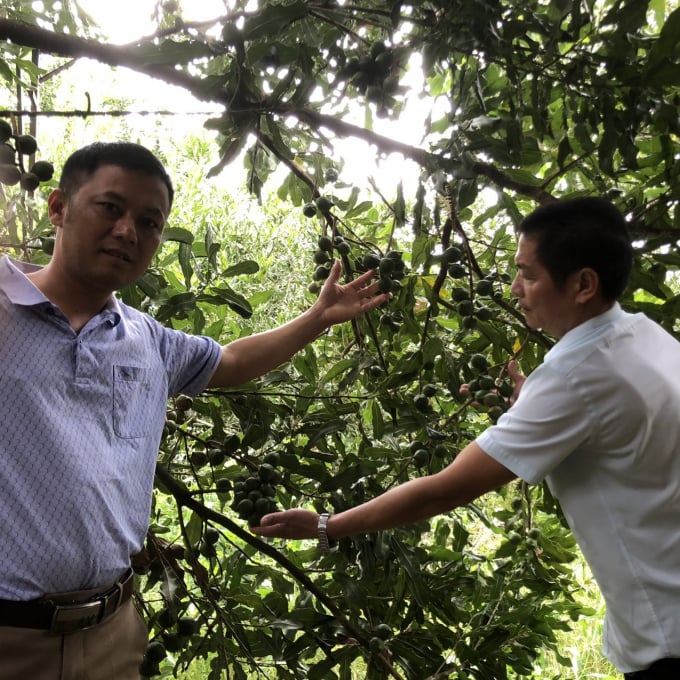
In 2021, with 4.5 hectares of macadamia, Mr. Hoi's family obtained 6-7 tons of nuts. Photo: Van Tho.
Macadamia is a suitable crop for Lam Dong province and brings high economic efficiency to farmers. In Dam Rong district - a remote section of Lam Dong province- many farmers have had a well-off financial source in recent years by converting crops in the right direction, especially macadamia trees.
Macadamia tree in Dam Rong district is no longer a new crop. Still, it has been oriented to develop as a perennial industrial plant grown on a large scale, aiming for chain linkage, creating a systematic raw material area associated with preliminary processing and export processing.
Currently, in Dam Rong, the area of macadamia has grown to nearly 1,000 hectares, mainly in 2 communes, Da K'Nang and Phi Lieng.
The nearly 4.5-hectare macadamia garden of Mr. Phan Van Hoi's family in Da K'Nang commune (Dam Rong district) is entering the business period; Mr. Hoi said he started researching and growing macadamia nuts in 2011.
Mr.Hoi decided to buy macadamia seeds for the nursery to propagate. Initially, they intercropped in the coffee garden to make shade trees and prevent soil erosion. As a result, the macadamia tree grew and developed well.
When the price of coffee was not stable, there was a lack of labor, so Mr. Hoi decided to cut all the coffee and grow only macadamia nuts. He nursed himself and bought more seedlings to plant instead of coffee.
Mosquito bugs mainly bite Macadamia, so it is necessary to visit the garden regularly and prevent it in time not to affect the quality of the fruit when it is time to harvest.
Macadamia loves manure and NPK; investing in suitable trees will be healthy, the fruit is wrong, the seeds are significant, and the kernel is crispy and delicious. Mr. Hoi limits pesticides and does not use herbicides but uses on-the-spot cutting and stamping machines to utilize organic fertilizer for the soil while protecting his health and protecting the environment.
In 2021, with 4.5ha of macadamia, Mr. Hoi's family obtained 6-7 tons of seeds. There are trees with a yield of 20-30kg of seeds in the garden. Previously, due to low production, Mr. Hoi peeled the green macadamia nuts by hand. When the amount of fruit was harvested a lot, he bought a peeler machine and applied mechanization in the post-harvest stage, helping to reduce costs and increase labor productivity.

Up to now, Dam Rong has an area of over 1,000 hectares of macadamia and still has great potential for development, especially intercropping with coffee, tea... Photo: Van Tho.
In 2019, Mr. Hoi bought a seed drying cabinet and seed separator and directly processed dried macadamia nuts to serve the market to increase the value of home-grown macadamia nuts. The dried macadamia fruit product has been registered for business with the brand name "Hoi Dung Macadamia Factory". At the end of 2020, his facility was certified with 3-star OCOP products at the product evaluation and classification contest 2020.
Currently, Mr. Hoi is cooperating with macadamia nut growers in the area 2 communes of Da K'Nang and Phi Lieng to purchase macadamia nuts at VND 100,000 per kilogram for preliminary processing and processing. In 2021, 5 tons of Hoi Dung macadamia products will be sold to the market and consumed in two main markets, Hanoi and Ho Chi Minh City.
With nearly ten years of experience, plus researching and testing many different crops, Mr. Hoi said that macadamia is a tree with many times higher value than other industrial crops. The advantage of the macadamia trees in Dam Rong is that they can be harvested twice a year, with a very high yield, averaging 15-20 kilograms per tree.
Meanwhile, the planting and care process is simple. The investment costs are not much, the harvest does not take much labor, has many outputs, and many are sold out.
In addition to quality seed selection and standard care, the collection, drying, and preservation of macadamia nuts are also very important. For quality macadamia, nuts must be harvested when the pods begin to turn brown.
The development of macadamia in Dam Rong district is showing very optimistic signs. Introducing macadamia trees intercropped in coffee gardens or pure planting will open up a direction for sustainable development, increase income per unit area, diversify products, and reduce market risks.
In the coming time, Mr.Hoi's macadamia farm will continue to cooperate with macadamia nut farmers in the area, growing and producing macadamia nuts according to organic processes under the support of Lam Dong Agricultural Extension Center.
In the future, macadamia production in the Dam Rong district will need to be associated with processing, expanding linkages between farmers, cooperatives, cooperative groups, and businesses to form a value chain and build a region and focus on building a brand for macadamia trees, gradually creating a macadamia industry along the product value chain from planting to processing and consuming products.
Translated by Ha Phuc
/2025/05/19/2617-14-211139_18.jpg)
(VAN) Vietnamese bird's nest enterprises are eager to access the promising Chinese market; however, only those with thorough preparation, truthfulness, strict regulatory compliance, and consistent product quality will be positioned for success.
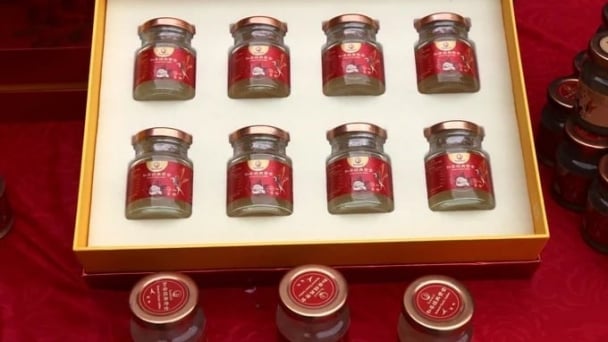
(VAN) For Vietnamese bird's nest products to penetrate deeply and sustainably into the Chinese market, it requires not only product quality but also strict compliance with the regulations on quarantine, traceability, and food safety.
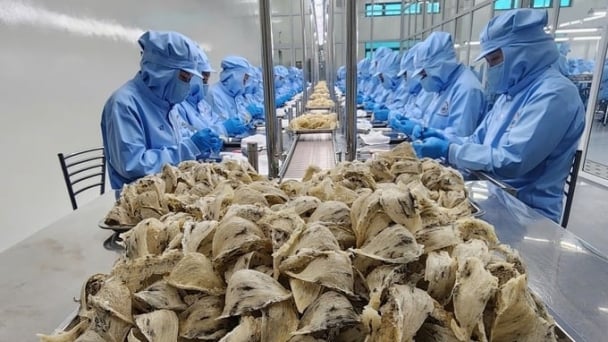
(VAN) As one of Vietnam's most high-value products, bird's nest is asserting its position on the national agricultural export map. China, with an annual demand of hundreds of tons, is considered the most promising market.
/2025/05/22/5250-1-184853_288.jpg)
(VAN) According to a representative from the Central Retail Vietnam, Vietnamese products such as seafood, sweet potatoes, dragon fruit, coffee, and spices hold great potential in the Thai market.
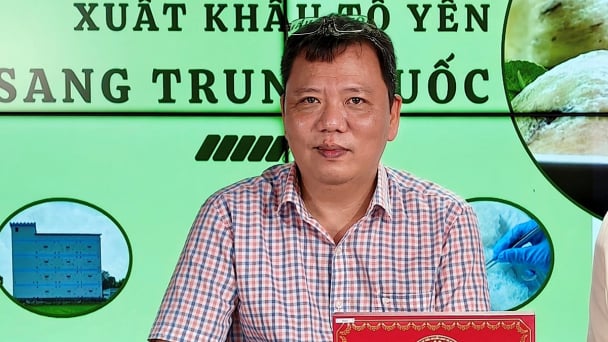
(VAN) A multi-channel, multi-directional strategy only works when the agricultural value chain meets global transparency and SPS standards.
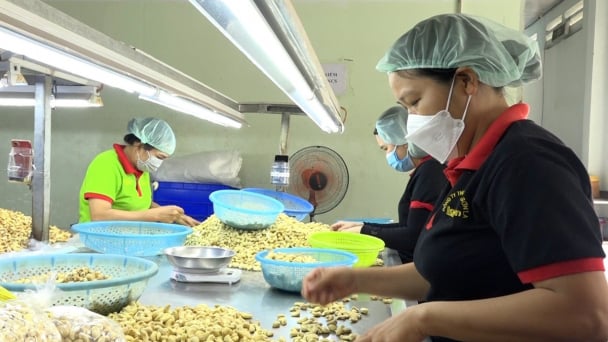
(VAN) Market expansion is a matter of survival for Vietnamese businesses amid fierce competition and global supply chain fluctuations.
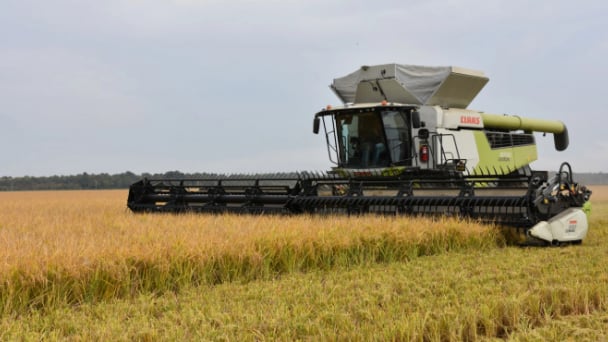
(VAN) Global market prospects for U.S. long-grain rice for the upcoming marketing year.